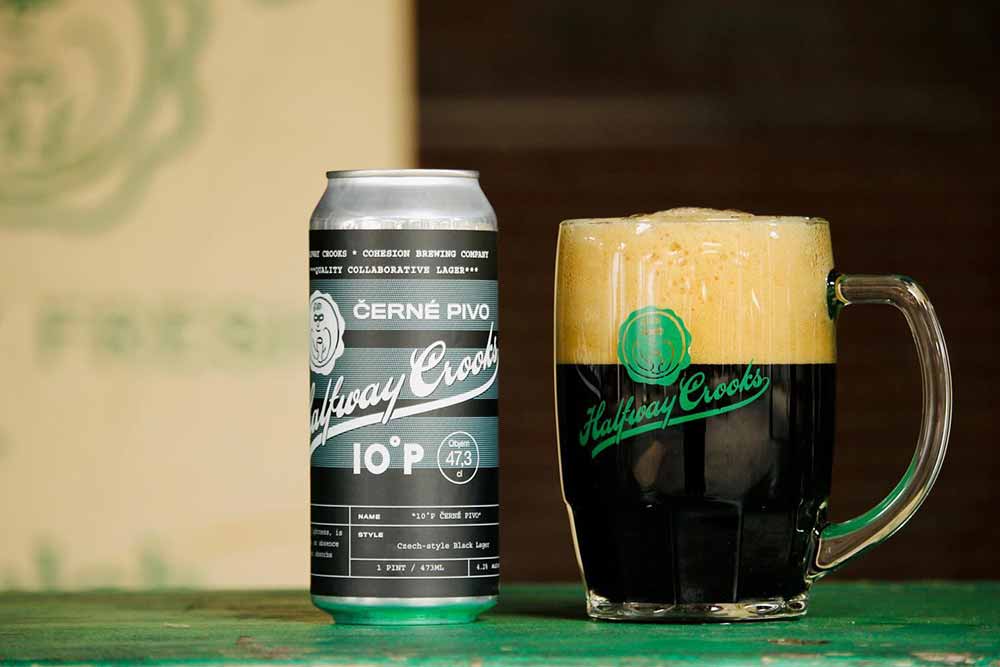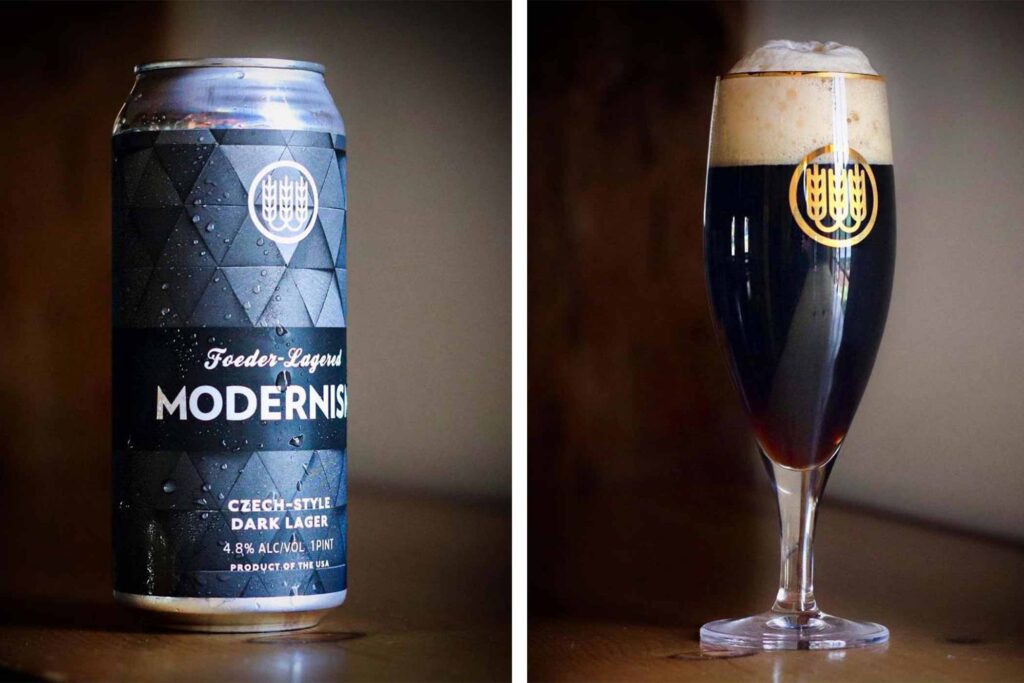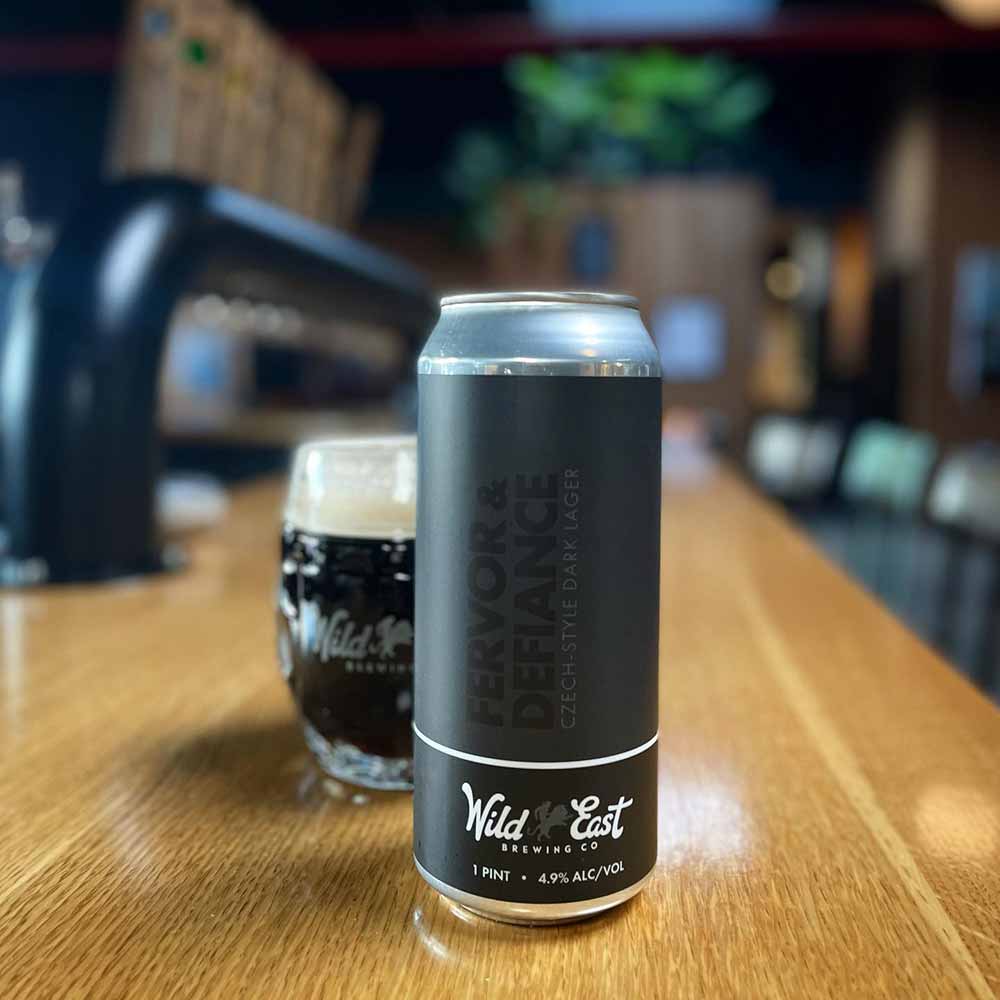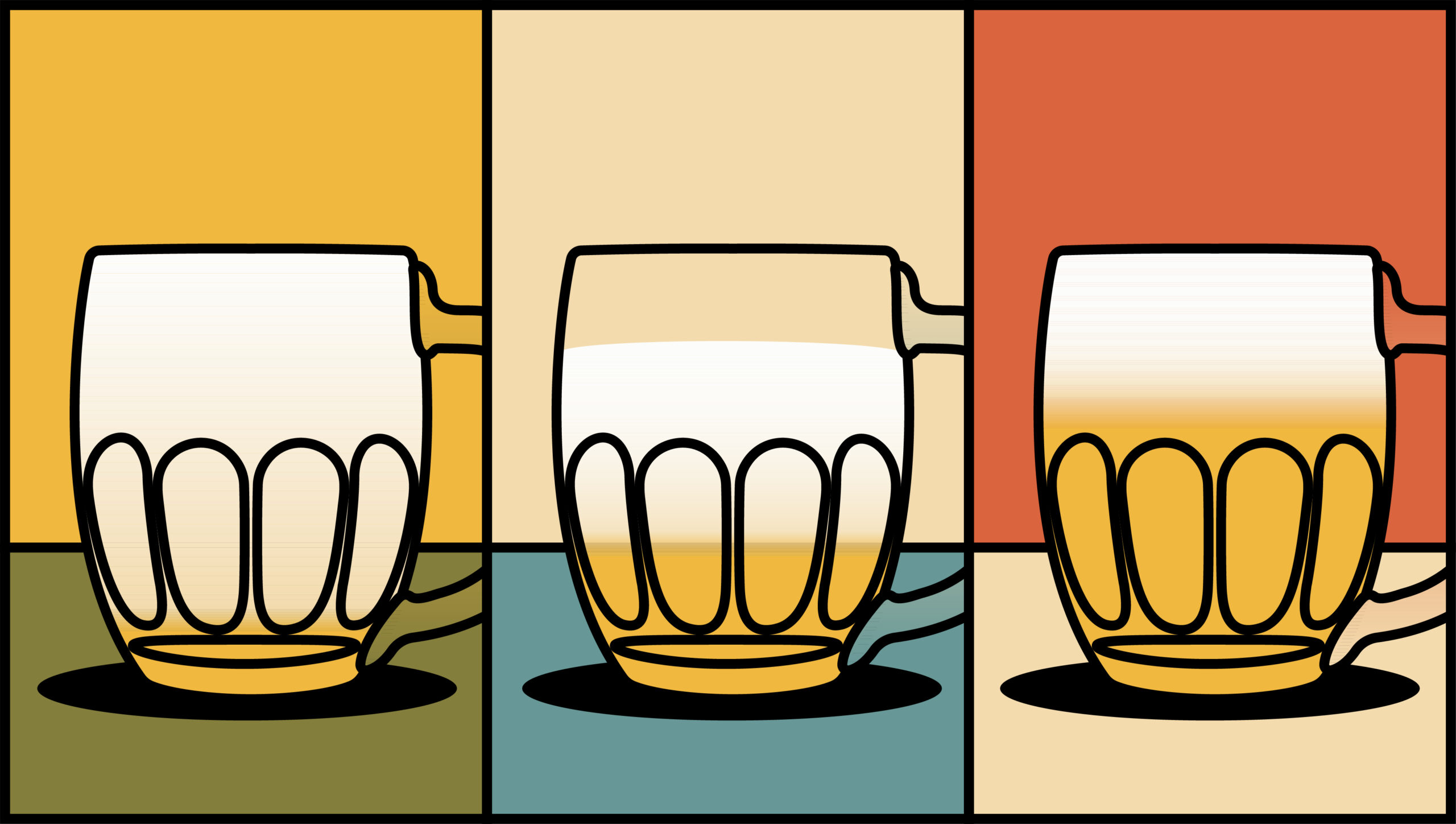Shop
Czech Me Out! A Czech Dark Lager Primer
Take a trip to the dark side.
Other Stories Like This:
Month by month, lagers seemingly occupy more real estate and enjoy higher esteem in America’s craft beer culture. Think of the lager’s rise as a reaction to the reign of IPA among stateside breweries; hops may be one of beer’s essential ingredients, and hop-forward beers will always deserve a place in the craft brewing canon, but not everyone wants to toss back Citra-Mosaic-Simcoe bombs. Lager isn’t just a “nice” alternative to IPA—it’s essential for rounding out tap lists.
The advent of modern craft brewing’s lager era introduced Americans to the wide, wide world of lager styles and sub-styles. Though all related, not every lager tastes precisely the same. For instance, sample a German pilsner, a Czech pilsner, and an Italian pilsner in a single session, marveling at the subtle variances between each, hallmarks of their respective brewing cultures.
Of these, the Czech beers are currently having a moment; more American breweries are serving Czech-style beers alongside standard offerings (like IPA) or as the full makeup of their menu. With the ascent of Czech-style American beers comes an unsung and unusual sub-style: Czech dark lager, known in Czechia as tmavé pivo—“dark beer.”
It’s possible a brewery near you has a Czech dark on tap or your favorite bottle shop has a space for a Czech dark on its shelves. It’s also possible that you’ve yet to experience the black sheep of Czechia’s beer culture. If you’re in the former category, lucky you; if you’re in the latter, you’re missing out, but maybe not for much longer. Czech beers are gaining a presence here in the U.S.—which means new fertile ground for Czech dark lager to flourish.
Excuse Me, You Dropped Your Roasted Malts In My Pale Lager
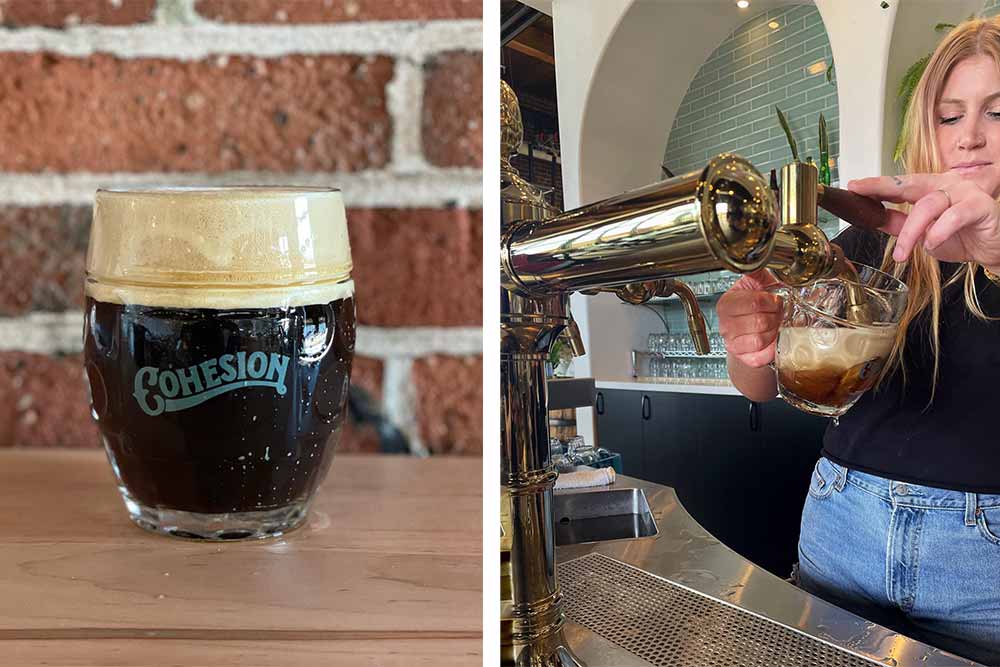
Photography courtesy of @cohesionbeer
For an easy, if incongruous, comparison, think about Czech dark lager in terms of Baltic porter. Both are lager beers; both visually defy preconceptions about lager beers, presenting anywhere from dark copper to pitch black.
But that’s where the likenesses stop; Czech dark lager is sessionable, whereas Baltic porter might have you leaning after one round.
In Czechia, what separates dark lagers from, say, pale lagers—like Pilsner Urquell—has to do with the beer body. “Czech lager, both dark and pale, is characterized by a full body and high drinkability,” says Adam Matuška, owner and brewmaster of the Czech brewery Pivovar Matuška, settled thirty minutes west of Prague in Broumy. “That’s exactly what the dark lager should have with a little higher body.”
Dark lagers’ grain bill comprises chiefly pilsner and Munich malts, with caramel malts coming in just behind and dark malts added in for color. The idea isn’t to make a roast-forward lager, but a richer, robust offshoot of the style.
Ryan Murphy, lead brewer at Schilling Beer Co. in Littleton, NH, echoes Matuška’s thoughts. “The style can range from moderately to very full-bodied and from deeply malty to balanced to slightly hop forward,” Murphy says, pointing to Czechia’s relaxed acceptance of broader flavor profiles as the factor distinguishing Czech beers from German beers. “Czech brewing [is] less stringent than you might find in Germany and more open to the brewers’ interpretation and customers’ palates,” he adds.
Open interpretation shouldn’t be mistaken for a license to run amok with the Czech dark lager style profile, of course. One group of brewers might prioritize the body above other characteristics, whereas another might place one characteristic out of the grab bag over the body.
Take, for instance, Eric Larkin, co-founder and brewer for Denver, CO’s Cohesion Brewing Company and an authority on Czech beer. “I think the most important part stylistically about it is that it’s really devoid of roasted malt flavors, on a higher level,” Larkin professes. “These beers do not have a heavy influence of roasted flavors.” He allows that a hint of roast is welcome, but it’s a thin line; step over it, and you’re in schwarzbier territory, where dark malt is one of the key ingredients, and Czech dark lager is anything other than schwarzbier.”
About 1,700 miles away from Denver in Brooklyn, Wild East Brewing Co’s Co-Founders, Brett Taylor, head of brewing, and Lindsay Steen, head of finances, bring their peers’ perspectives together, emphasizing the role equivalence plays in the style. “You have to be able to get a full body, but then you have to get as little roast character as possible,” Taylor says. “It’s not easy, and people don’t necessarily have the tools.”
Czechs, Balances
A good Czech dark lager is increasingly easy to come by; a great one is harder. Making lager, in general, is a meticulous test of patience, but add “dark” to the brief, and the challenge jumps a level.
Matuška considers this detail fundamental to all dark beers, not just Czech dark lagers. The flavor profiles fundamental to each dark beer style tend to lean on the bolder side, giving dark beers brewed less than perfectly a flavor layer to disguise their flaws. “Dark beers, for example, from Bamberg are dark and smoked. Stout is coffee-like,” says Matuška.
Czech dark lager’s flavor profile, Matuška says, is supposed to be well-balanced. “It shouldn’t be too caramelly, too sweet, too bitter, too roasted or coffee-y,” he explains. “It can have a bit of everything, but in a reasonable and mainly balanced ratio. And that is hard to do.”
The absence of a dominant note in Czech dark lager means brewers have nothing to hide behind, as is the case when brewing any type of lager. Where one might get into trouble is in conflating the “dark” in this style with the “dark” in others, either by overdoing one or two flavors and throwing the beer out of whack or by adding in flavors that don’t belong in Czech dark lager in the first place.
Taylor notices this misconception among brewers about the style’s flavor profile more and more frequently as more breweries step into Czech beer’s sandbox, too; it’s about equilibrium and not about elevating one layer of flavor above the rest. “You get [breweries] where they think buying [Weyermann Bohemian Pilsner Malt], and using Saaz, and using Urquell-derived yeast strains, and then dark-roasted something-something equals proper Czech dark lager,” he says. “But I find them to be bigger misses than if you’re trying to make a schwarzbier when you don’t know what you’re doing.”
Big in America, Brushed Off in Czechia
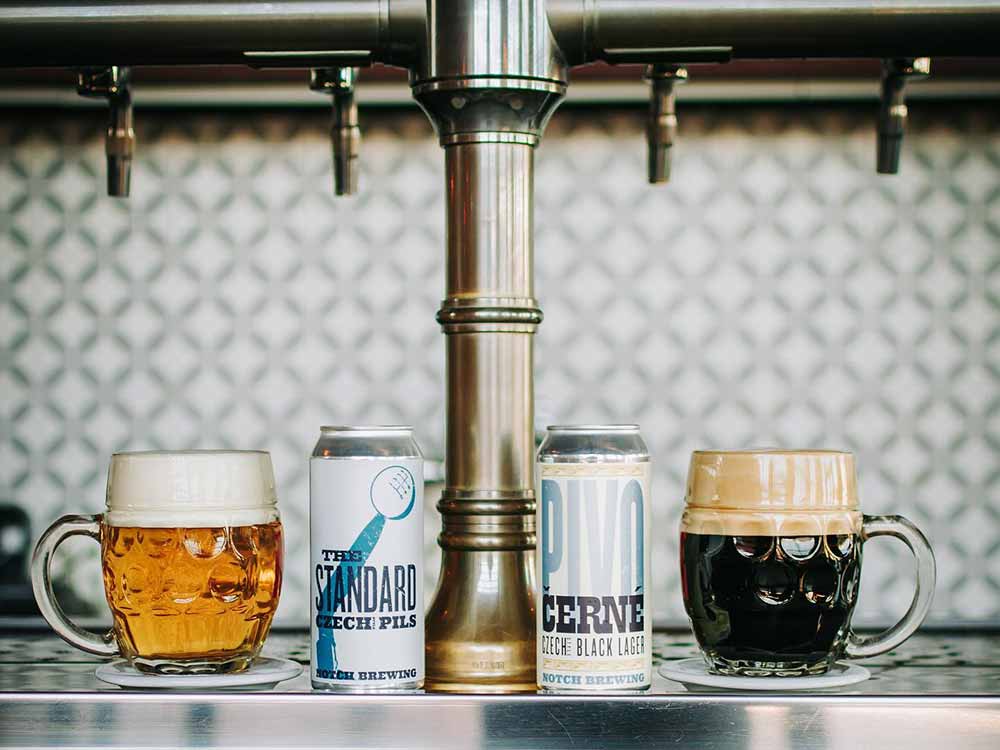
Photography courtesy of @notchbrewing
Knowing is half the battle; with Czech beer, that battle is hard-won. Documentation is a very real hurdle for brewing Czech beer. Consider Moon Atlas, Wild East’s take on the polotmavé, or Czech amber lager. “[Taylor] struggled to find any sort of recipe online, other than just doing research and reading about it and making a few guesses,” says Steen.
Access, too, poses a problem. Here in the U.S., we’re hard-pressed to find Czech-brewed Czech dark lagers, even in well-curated bottle shops. Try searching for tmavé from U Fleků, the Republic’s longest-running craft brewery, on your favorite beer delivery app; it’ll respond to the request the way waiters do when you sneeze in the middle of your order.
This is a shame. Czech beers offer great flexibility for American brewers, even with the proscriptions against stout flavoring in Czech dark lager; as such, they offer newness for American beer drinkers. “The exciting part of bringing these styles to consumers in the U.S. is that there is a real curiosity about variety in beer styles and brewing traditions,” says Murphy. Put another way, brewing Czech styles stateside is a win for brewers and their patrons.
In this atmosphere, Czech dark lager has made a slow but steady rise in America’s craft beer market. Murphy attributes this to “a larger appreciation for lagers in general, coupled with consumers looking for flavorful options that are lower ABV,” he says.
For his part, Larkin has picked up on that same trend, too, but sees Czech dark lager’s place in American brewing culture as niche. “The Czech dark lager in the U.S. seems more cult,” he says. “It definitely has more of a unified following, specifically with brewers, than even sometimes the pale lager does.” It’s the beer nerd’s beer.
Somewhat ironically, in Czechia, Czech dark lager is nobody’s beer. You’d think the country the beer originated from would have warmer, fuzzier feelings about it. You’d be wrong. Even accounting for Czech breweries known for Czech dark lager, like U Fleků, Pivovar Hostomice, and Budějovický Budvar, it’s the světlé výčepní or světlé ležák Czech pale lagers that hit around 4% ABV or 5% ABV, respectively, that rule Czechia. Czech dark lager simply lacks that same broad recognition.
“It’s easily the third most popular style [in Czechia]; it’s two percent or three percent of what I see out there,” says Larkin. Czech folks maintain a stigma against Czech dark lager today that dates back to the nation’s communist period between 1948 and 1960. Dark lagers made around this time used roasted sugar, which doomed these beers to excessive sweetness. “That idea got embedded in people’s minds until today,” says Matuška, “and many of them think that dark beer equals sweet beer, which is not true.”
Matuška provides another more innocent reason for Czech dark lager’s standing at home: Czech pale lager is just a really damn good beer. “There is simply no need to drink other beers,” he says.
Fair enough. There’s no point drinking something you don’t like, after all.
History Breeds Familiarity—And Relief
But there is, perhaps, a baked-in comfort locals feel about Czech pale lager, a sense of safety entwined with Czechia’s history. Remember: Czechoslovak troops regained control over their borders in 1945, three years before the threat of civil war forced the installment of a Communist government and consequently subjected citizens to totalitarian rule. It may sound like a gag, but the truth is, Czech pale lager was manna from heaven.
“It was food; it was nutrients,” says Larkin. “When they literally couldn’t get food under communism or under Nazi occupation like that, they were like, ‘Yeah, I need these calories.’” To this day, if Czechs catch even a whiff of price increases on their beloved beers, they’ll stir up a public ruckus. You do not come between a Czech and their světlé výčepní or ležák pivo, like a parent and their favorite child, and that’s the dynamic tmavé pivo is caught in even in 2023.
That’s a tough preference to break. Maybe, ultimately, it’s up to American brewers to help Czech dark lager shine overseas when it frankly can’t in Czechia. “We’re talking about a country with very long, rich traditions in lager, where their own wave of small craft breweries is arising differently than here, just because they’re a beer culture country,” says Steen.
She sees countries like Czechia regarding their relationship to specific kinds of alcohol—think Russia and vodka. “Being a very beer-rich country, I feel like the hype trends and stuff probably fight a little more,” Steen notes. America is a beer-rich country, too, but without the constraints of history dictating what gets brewed—and what Americans like to drink.
So, will Czech dark lagers rise here like never before?
Well, we suppose that depends on whether you like drinking them.
Our Favorite Czech Dark Lagers to Try Right Now
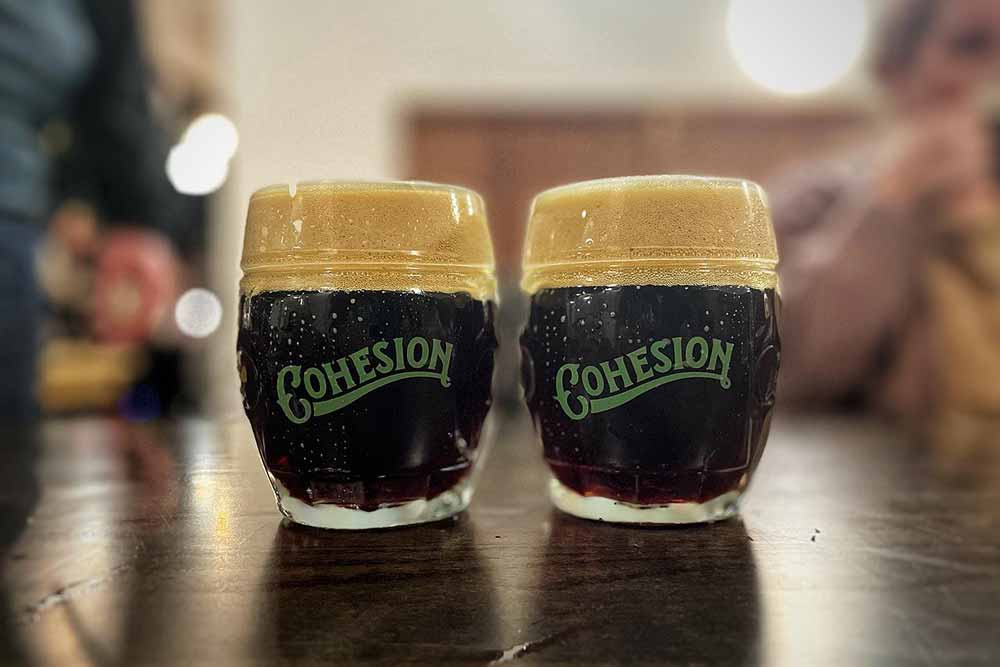
Photography courtesy of @cohesionbeer
Wild East Brewing Co. – Fervor & Defiance
Brooklyn, NY
If “balance in all things” is Czech dark’s ethos, then an excellent Czech dark has to reward that balance with complex nuance in the finished beer. Wild East’s presentation of the style clearly, Fervor & Defiance, expresses the beer’s classic traits: A touch of sweetness, a touch of roast, and a well-rounded body. But on the palate, expect a parade of floral spice that complements those elements, never for a moment fighting against them. Fervor & Defiance is an exercise in harmony, patiently brewed and worth all Wild East’s effort.
Trillium Brewing Company – Czech Dark
Canton, MA
The craft beer industry and culture alike tend to recognize Trillium Brewing for their hoppy beer lineup and barrel-aged stouts—rightly so—but they make a point of keeping their tap list diverse, too, with a noticeable priority on their lager program. Recently, their lager offerings have expanded to include Czech dark, too. “Czech Dark fits perfectly for folks who want something with incredible richness and smooth malt character while still being very drinkable without the heft of a barrel-aged stout,” says Mr. Trillium himself, J.C. Tetreault. Their interpretation of the style makes good on that promise while toeing the line where a single flavor—sweetness, in this case—almost prevails over the rest. Czech Dark shows just how hard it is to maintain that tightrope walk but avoids stumbling; that’s as much a testament to the style’s challenges as it is proof of what a joy it is to drink, and in Trillium’s context, it’s a welcome offering alongside their burlier beers.
Cohesion Brewing Company – Tmavé Speciální Pivo
Denver, CO
For what’s arguably the best of the best among American-made Czech dark lagers, you have to fly to Denver, one of the country’s best beer cities, and then Uber to Cohesion for a pour of Tmavé Speciální Pivo. If the Czechs actually drank tmavé pivo instead of turning their noses at it, they’d probably drink something like this. Tmavé Speciální Pivo suggests scale without clocking in at a high ABV; sweet plays with bitter, with sweet coming out on top, but the beer exhibits traces of both while avoiding the trap of overdoing either ingredient. Cohesion’s tmavé pivo personifies the pleasures of Czech dark lager by finding great depth out of simplicity.
Schilling Beer Co. – Modernism
Littleton, NH
There’s an earthiness to Modernism that’s far less prevalent in its peers, but that’s good. In fact, it’s essential to underscore Czech dark’s reception to little tweaks here and there in the style. Modernism showcases the flexibility of Czech brewing nicely through that earthy quality, likely a result of Schilling’s decoction process; a shot of spice on the finish gives the beer not only a sense of completion but a uniqueness to set it apart from the best Czech dark lagers brewed in the U.S.
Notch Brewing – Black Lager (Černé Pivo)
Salem, MA
A little Czech language lesson: Tmavé means “dark,” and černé means “black.” Suffice it to say that Notch’s Black Lager is truly the darkest of the dark. It might also be the mellowest Czech dark in the bunch, where lager cleanliness tempers lager crispness; baked, bready notes enjoy prominence here, reducing bitterness without totally smothering it. Amazingly, a hit of chocolate cuts through Černé Pivo’s premiere characteristics but stops far short of pushing the beer into the cloying range.

